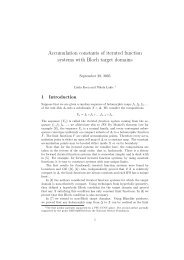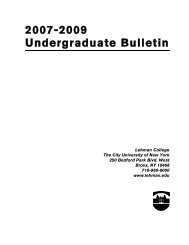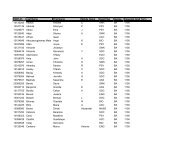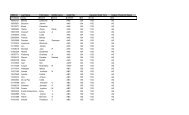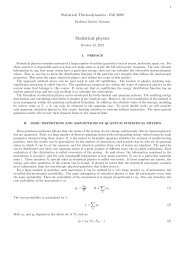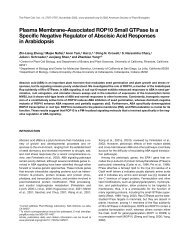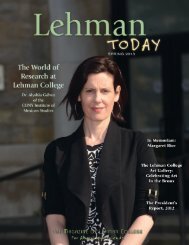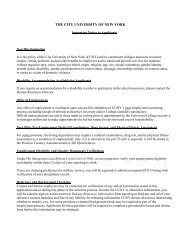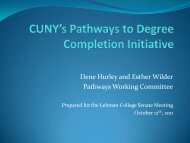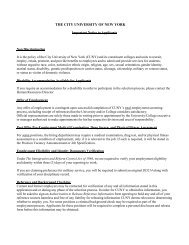Create successful ePaper yourself
Turn your PDF publications into a flip-book with our unique Google optimized e-Paper software.
ims of Injustice<br />
Photo by Estuardo Dieguez<br />
kick and a slam of machine gun butts, the door gave way and<br />
loudly fell to the floor. Seeking to protect her husband, Doña<br />
Ana rose from bed and stood between the armed men and<br />
her husband.<br />
“They knocked me down on the ground,” she says with sadness,<br />
as she clutches her stomach and rocks forward. “They<br />
tied up my husband and kicked him and hit him with their<br />
guns.” Doña Ana begins to cry as she recounts, “They took<br />
him away.”<br />
Doña Juana: Wiping the sweat from her brow with a small<br />
hand towel, Doña Juana seats herself at the table. She has<br />
been waiting nearly eight hours to give her testimony. Her skin<br />
has a gray pallor accompanied by the thick cough associated with<br />
tuberculosis. She immediately begins to speak, “My son was a catechist.<br />
He knew how to read. Now in the village, no one knows how<br />
to read. My son just disappeared.” She is desperate. She is hopeful.<br />
“Do you know where he is?” she asks me. I am powerless and feel<br />
close to useless as I explain that we are exhuming the victims of<br />
the plaza massacre and that we do not know the fate or place of<br />
burial of the disappeared.<br />
Doña Rosario: In 1978, at 55 years of age, Don Manuel was<br />
the eldest Maya priest in his village. He was a spiritual leader and<br />
guide respected throughout Panzós. One year after the plaza massacre,<br />
he and his wife Doña Rosario were awakened in the middle<br />
of the night by the sound of a truck on the dirt road near their<br />
home. Soldiers broke into the house and dragged the Mayan priest<br />
out, wrapped in the hammock in which he had been sleeping. “They<br />
were beating and kicking him with no mercy,” remembers Doña<br />
Rosario. “That same night, the other priests disappeared, too.”<br />
Doña Magdalena: Doña Magdalena‘s parents and brothers<br />
survived the plaza massacre. Her husband was not so fortunate. “I<br />
had ten children when my husband died in the plaza. But that year,<br />
many people died, she explains, trying to give context to the incomprehensible<br />
by making ordinary the extraordinary. She pauses for<br />
a moment, nodding her chin and rocking her body, then she says<br />
almost matter-of-factly, “It was a year of death.”<br />
Photo by Larry Kaplow<br />
The Plaza Massacre<br />
All testimonies corroborated that those who had gone to the plaza<br />
went because they needed land to cultivate their subsistence<br />
maize crops. We reconstructed the massacre and the violence that<br />
followed. Based on testimony, as well as municipal records, we<br />
knew that at 9 a.m. on May 29, 1978, there was a burst of gunfire<br />
into the crowd gathered in the Panzós plaza and that those who<br />
were not shot fled. The fact that the Guatemalan army opened fire<br />
into a crowd of civilians was not disputed.<br />
“With just one burst of gunfire they killed the people,” said<br />
María Maquín. “It was only just for a moment and everyone<br />
fell there. I was so surprised because we had only arrived just<br />
a few moments before. My grandmother was going to ask for<br />
a favor. She said she wanted to speak with the mayor. But they<br />
didn’t respond well to her. They answered, asking, ‘What do<br />
you want?’ ‘For a little bit of land, that’s what we came for,’<br />
she said. They responded, ‘There are your lands, there in the<br />
cemetery.’ They opened fire, and I was in shock as I watched the<br />
people die.”<br />
May 29, 1998: The Reburial<br />
Photo by Alyssa Butler<br />
The auditorium in Panzós was filled to capacity<br />
last summer to commemorate the 32nd<br />
anniversary of the plaza massacre and to hear<br />
from panelists that included <strong>Lehman</strong> Professor<br />
Victoria Sanford (far left). Above, Maria<br />
Maquin, who was twelve when she survived<br />
the massacre, addresses the crowd (left) and a<br />
widow remembers those who perished (top).<br />
The following spring, on the twentieth anniversary of the massacre,<br />
we returned the remains of the victims to the community for<br />
continued on page 18<br />
<strong>Lehman</strong> Today/<strong>Spring</strong> <strong>2011</strong> 17



